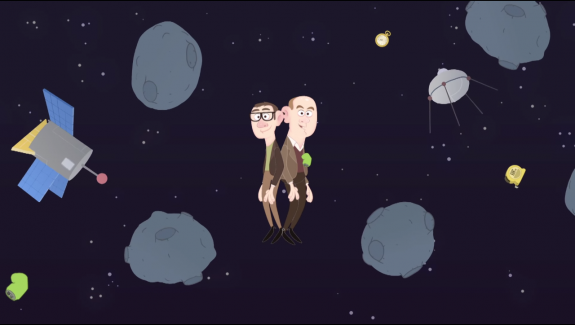CERN scientists simplify space-time in 3 short videos
By Emilie Soffe on August 14, 2014 in TED-Ed Lessons

Space is where things happen. Time is when things happen. And sometimes, in order to really look at the universe, you need to take those two concepts and mash them together. Space-time is a pretty confounding subject to wrap one’s head around, though, so we asked CERN scientists (and all-around super nerds) Andrew Pontzen and Tom Whyntie to break it down for us. Below, the full three-part series, complete with black holes, space-time diagrams and a load of wibbly-wobbly timey-wimey stuff.
In this first lesson, our hilarious hosts go through the basics of space and time individually, using a flip book to illustrate how we can begin to look at them together.
Light always travels at a speed of 299,792,458 meters per second. But if you’re in motion too, you’re going to perceive it as traveling even faster — which isn’t possible! In this second installment, Pontzen and Whyntie use a space-time diagram to analyze the sometimes baffling motion of light.
In the first two lessons, we dealt with objects moving at constant speeds with straight world line, in space-time. But what happens when you throw gravity into the mix? In this third and final lesson, Pontzen and Whyntie explore what gravity means for space-time — or rather, what space-time means for gravity.
Want to see more of our collaborations with CERN scientists? The beginning of the universe is a great place to start. >>
Tags:
